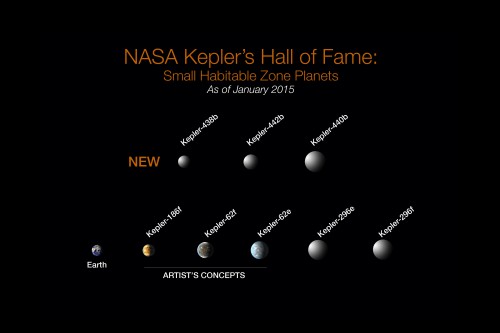
Even after problems threatened to end the Kepler space telescope’s mission for good last year, the planet-hunting observatory has continued to help astronomers discover thousands of exoplanets orbiting other stars, including ones that are potentially habitable. As reported yesterday at the American Astronomical Society (AAS) meeting, Kepler has now confirmed just over 1,000 exoplanets, with thousands more awaiting confirmation. A growing number are also potentially habitable, at least by Earthly standards.
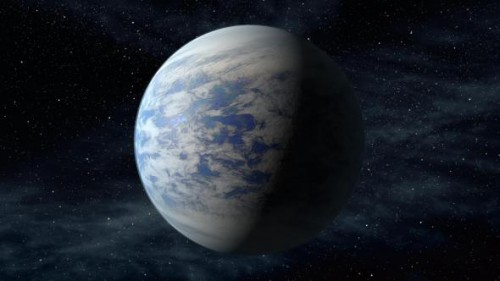
To date, Kepler has now confirmed 1,004 exoplanets and has found an additional 4,175 candidates. Since the last update, this is an increase of eight more confirmed planets and 554 more candidates. Of the newly validated planets, three are in their stars’ habitable zones (where temperatures could allow liquid water to exist on the surface of rocky planets), and of those three, two are likely rocky in composition, like Earth. Of the 554 new candidates, six are close in size to Earth and also orbit in the habitable zone.
“Each result from the planet-hunting Kepler mission’s treasure trove of data takes us another step closer to answering the question of whether we are alone in the Universe,” said John Grunsfeld, associate administrator of NASA’s Science Mission Directorate at the agency’s headquarters in Washington. “The Kepler team and its science community continue to produce impressive results with the data from this venerable explorer.”
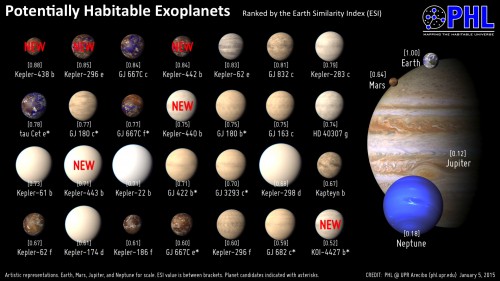
Smaller, rocky planets like Earth are the primary goal in Kepler’s searches, since these offer the best chances for life of some kind to have developed. Two of the newly confirmed planets are also similar in size to Earth: Kepler-438b and Kepler-442b. Both are less than 1.5 times the diameter of Earth; Kepler-438b is 475 light-years away and 12 percent larger than Earth and orbits its star once every 35.2 days, while Kepler-442b is 1,100 light-years away, 33 percent larger than Earth, and orbits its star once every 112 days.
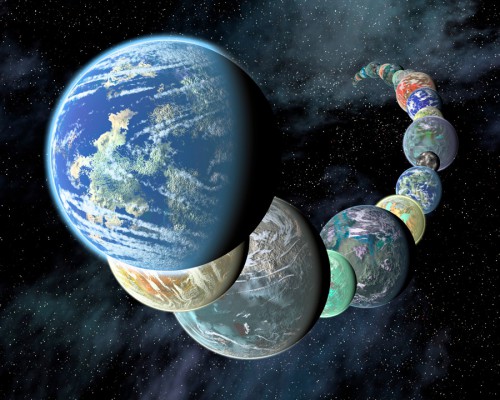
The new findings bring astronomers even closer to finding other Earth-like worlds elsewhere in the galaxy. A major aim of Kepler is to determine how many smaller rocky planets like Earth orbit in the habitable zones of their stars. Extrapolation of the available data has already suggested they number in the millions or more, with billions of exoplanets overall in our galaxy alone.
As co-author Doug Caldwell, SETI Institute Kepler scientist at NASA’s Ames Research Centre, stated: “With each new discovery of these small, possibly rocky worlds, our confidence strengthens in the determination of the true frequency of planets like Earth. The day is on the horizon when we’ll know how common temperate, rocky planets like Earth are.”
“Kepler collected data for four years – long enough that we can now tease out the Earth-size candidates in one Earth-year orbits”, said Fergal Mullally, SETI Institute Kepler scientist at Ames. “We’re closer than we’ve ever been to finding Earth twins around other sun-like stars. These are the planets we’re looking for.” Mullally led the analysis of a new candidate catalog for the Kepler mission.
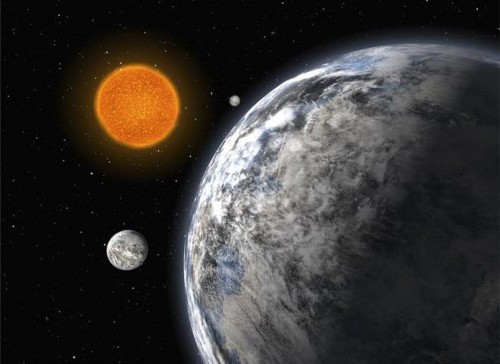
It should be noted that these exoplanet numbers are for the Kepler mission alone; many other confirmed planets have also been found by other ground-based and orbiting telescopes. According to the Open Exoplanet Catalogue, there are currently 1,840 confirmed exoplanets (of all types, including from Kepler). Not so long ago it wasn’t known if exoplanets even existed; now they seem to be everywhere.
In terms of possibly habitable exoplanets, there are currently 28 such worlds listed in the Habitable Exoplanets Catalog, including the new Kepler ones. Again, these are all near Earth-size or just a bit larger and orbit in the habitable zone of their stars.
As also just recently reported, there are super-Earth exoplanets (larger than Earth but smaller than Neptune), some of which could have global water oceans, making them another prime target in the search for alien life. It’s also thought that some of them may be even more habitable than Earth. Scientists have now come up with a “recipe” for Earth-like planets, which, along with other evidence, suggests that they should be fairly common in the universe.
Even though Kepler is now in its secondary K2 mission (hobbled but still very functional), there is still a lot of data from the telescope’s initial prime mission to go through, promising even more fascinating discoveries. The search for Earth’s twin (or near-twin) continues.
The new findings will be published in The Astrophysical Journal as well as The Astrophysical Journal Supplement.
Want to keep up-to-date with all things space? Be sure to “Like” AmericaSpace on Facebook and follow us on Twitter: @AmericaSpace




One has to be very careful about the nature of the 8 new planets found orbiting in their systems’ habitable zone. A more detailed look at the discovery paper shows that most of these planets are likely to be mini-Neptunes and are unlikely to be potentially habitable. Also, the discovery team has taken liberties with the definition of the HZ so that even Venus (which is NOT habitable!)would be considered inside the HZ of our solar system using their highly optimistic definition. Still, this team has found one planet that is probably the best potentially habitable planet candidate found to date.
http://www.drewexmachina.com/2015/01/08/habitable-planet-reality-check-8-new-habitable-zone-planets/
“..billions of exoplanets in our galaxy alone.” Multiply that number by “billions of galaxies” and the numbers point to a high probability of countless Earth-like plants out there with a rich variety of life forms. Too bad we are separated by such space-time distances but at least we can begin to “scratch the surface.”
While the news has been dominated by the discovery of 8 new planets orbiting inside the habitable zones of a group of dim K- and M-dwarf stars, there was also the announcement of a pair of Kepler planet candidates orbiting inside the HZ of two more Sun-like stars. While their planetary nature still requires confirmation, KOI 2194.03 and KOI 5737.01 provide a foretaste of the Kepler discoveries yet to come.
http://www.drewexmachina.com/2015/01/09/earth-twins-on-the-horizon/